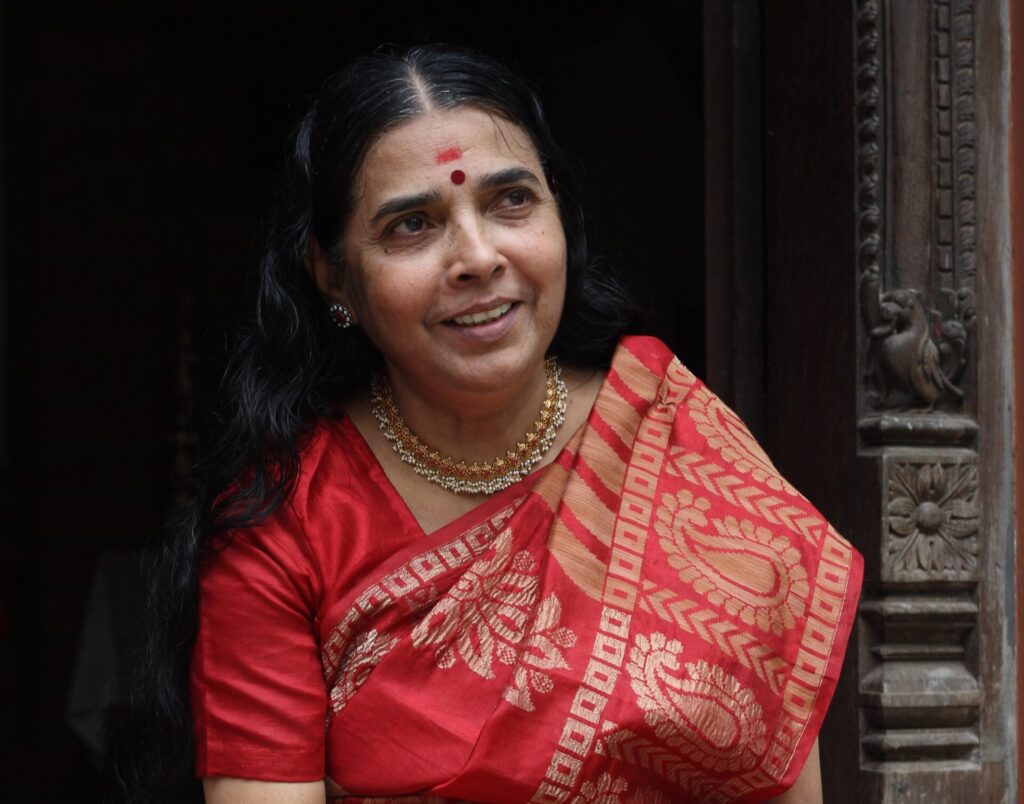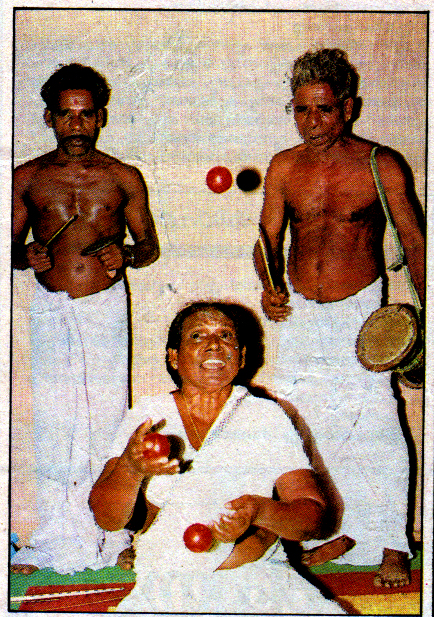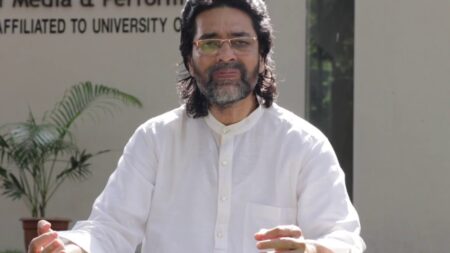Kerala has a rich history of women’s performance arts, including Nangiarkoothu, Thiruvathirakali, and Ammanattam. While the first two are still practiced, Ammanattam has nearly vanished. Unlike the structured storytelling of Nangiarkoothu or the rhythmic precision of Thiruvathirakali, Ammanattam was spontaneous and communal. Women performed it in village gatherings—for their own joy and as part of festivities. Though rarely documented, traces of it live on in Kerala’s puppetry, classical dance, and folk rituals. In this conversation, Nirmala Paniker, who has extensively researched these art forms, explores Ammanattam’s origins, its place in daily life, and the reasons behind its decline, shedding light on a forgotten tradition
Can you tell us about Ammanattam?
Ammanattam, basically juggling, is a unique, female-centric performance tradition that was once an integral part of Kerala’s social fabric. Though now a rare sight, it remains an important marker of the region’s cultural past.
How did Ammanattam originate? Has it always been a part of Kerala’s folk tradition?
The name itself refers to a performance tradition primarily practiced by women, often for their own enjoyment and for the entertainment of spectators. It was a social activity—bringing communities together, especially during festive occasions.

Historically, Ammanattam evolved from a ritualistic practice into a more structured performance art. It was performed across different caste and social groups, though it was particularly prominent among women in rural areas. The performance was characterized by intricate movements, rhythmic patterns, and a seamless blend of craft traditions and musical compositions.
The roots of Ammanattam can be traced back to the ancient Chera kingdom. References to similar practices appear in Sangam-era poetry, offering glimpses into its antiquity. Words like Ammanavari, Kanthukavari, and Oonchalvari are mentioned in Chilappathikaram—one of the oldest Tamil literary works—suggesting that this tradition was not only prevalent during the Chera period but was also woven into the socio-ritualistic life of the
As a tradition with a long history, has Ammanattam influenced other art forms in Kerala?
Yes, Ammanattam’s influence extends beyond dance and ritual, finding its place in Kerala’s theatrical and puppetry traditions. A significant connection exists in Bommalattam, the Tamil string puppetry form, where the Ammanattam lady is introduced alongside the Vidushaka (clown or comic character). This representation highlights the cultural exchanges between Kerala and Tamil Nadu, reinforcing the central role of women in performance traditions.
Kerala’s own puppetry traditions also bear traces of Ammanattam, with its characters appearing in performances that blend entertainment with ritual. Beyond puppetry, echoes of Ammanattam can be found in classical dance and theatre traditions such as Koodiyattam, Mohiniyattam, and Nangiarkoothu. In these forms, female characters often incorporate Ammanattam-inspired movements and gestures into their performances, underscoring the tradition’s enduring legacy.
The presence of Ammanattam in these art forms speaks to its broad cultural relevance. It is not merely a folk art that existed in isolation but one that influenced and shaped the performance traditions of Kerala.
Was Ammanattam also a part of ritual practices?
Absolutely. Ammanattam was not just a performance—it was an integral element of religious and social ceremonies in Kerala. In certain female-centric traditions, such as Thiruvathirakali (a circular dance performed by women), Ammanattam played a vital role.
For instance, during the Thiruvathira festival in the Malayalam month of Dhanu (December-January), Ammanattam was performed as part of the welcoming procession for the Pathirapoovu (moonlight flower). The performance symbolized celebration while also serving as an invocation of divine blessings.
Additionally, Ammanattam held significance in rites of passage, particularly in ceremonies marking a girl’s transition to womanhood. During puberty rituals, young girls would undergo a ceremonial bath in a pond, after which they were welcomed back into their homes with prayers and festivities. Ammanattam was often performed on these occasions, reinforcing its role in marking important life transitions.
One of the most fascinating historical references to Ammanattam appears in Chilappathikaram, one of the five great Tamil epics. The text describes a grand procession celebrating the return of the king and queen from Hemakuta, bringing with them a sacred stone to craft the idol of Kannaki. Among the many groups in the procession were the Kalangattu Maahila-s—women who performed Ammanattam alongside other ritualistic dances like Kurava and Aarppu.
This reference indicates that Ammanattam was not merely an entertainment practice but a deeply sacred and ritualistic performance, often conducted during auspicious occasions. Whether in royal processions or local festivals, it played a crucial role in bridging the mundane and the divine, blending elements of devotion, artistry, and cultural expression.
Today, Ammanattam has almost disappeared from Kerala. As modernization and changing lifestyles reshape traditions, many indigenous art forms struggle to survive. Yet, the remnants of Ammanattam can still be traced in certain ritualistic performances and classical art forms. Recognizing and documenting such vanishing traditions is crucial—not just for cultural preservation but for understanding the rich and diverse artistic heritage of Kerala.
Through continued research and revitalization efforts, there is hope that Ammanattam, like many other forgotten traditions, may find new life in contemporary practice—perhaps as a revived performance art or as an inspiration for future artistic expressions.




